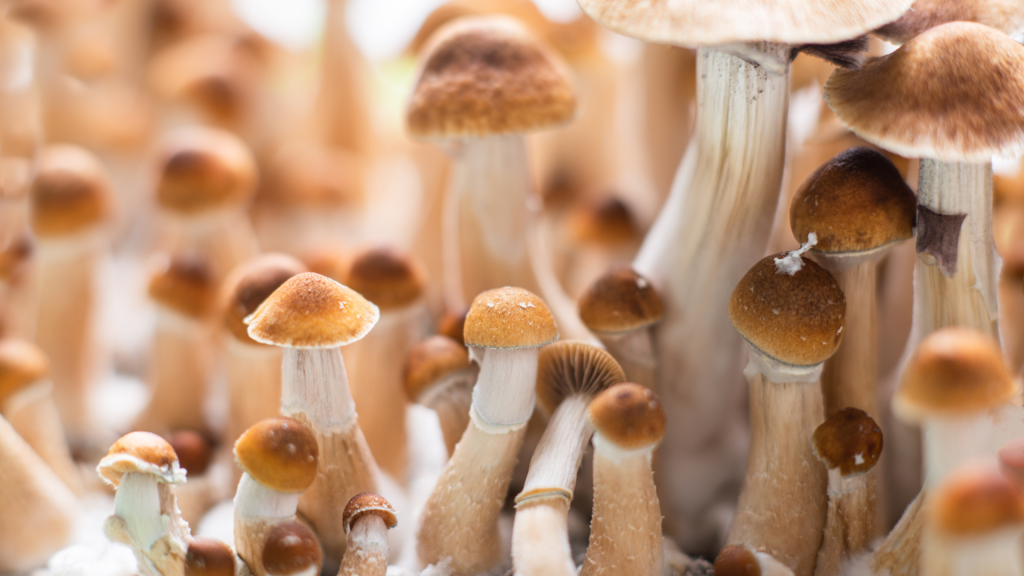Psilocybe cubensis is one of the most well-known psychedelic mushrooms (available with offerings) in the world. Its name carries both scientific meaning and cultural weight. To understand what Psilocybe cubensis is, it helps to look at the origin of its name, its effects, and the nicknames it has gained over time.
Where the Name Comes From
The name Psilocybe comes from ancient Greek. The root psilos means “bare” or “smooth,” and kubê means “head.” Together, the genus name suggests “bare head,” describing the smooth, cap-like appearance of these mushrooms.
The species name cubensis means “coming from Cuba.” This refers to the location where the species was first formally described in the early 20th century. Today, Psilocybe cubensis grows naturally in many tropical and subtropical regions, but its name reflects its Cuban origin.
What Psilocybe Cubensis Is
Psilocybe cubensis is a species of psychedelic mushroom that contains psilocybin and psilocin, compounds responsible for its effects. It is the most widely cultivated psilocybin mushroom because it adapts well to many growing conditions. This makes it popular among cultivators and widely available around the world.
The mushrooms are medium-sized, usually with golden-brown caps that flatten as they mature. The stems are sturdy and often show a blue bruising reaction when handled. That blue color is linked to the oxidation of psilocin, a sign of its psychedelic properties.
Effects of Psilocybe Cubensis
The effects of Psilocybe cubensis depend on the dose, the setting, and the mindset of the person taking it. After ingestion, psilocybin converts into psilocin, which interacts with serotonin receptors in the brain.
The onset usually begins within 20 to 40 minutes. The peak experience arrives one to two hours later and can last four to six hours in total. Common effects include:
- Altered perception of time and space
- Visual patterns and color changes
- Deep emotional shifts
- Feelings of connection with others and the environment
- Spiritual or mystical-type experiences
While many report positive outcomes, the experience can also bring challenging emotions. Supportive settings and preparation make the experience safer and more beneficial.
Street Names and Cultural Identity
Over time, Psilocybe cubensis has picked up a range of nicknames. On the street, they are often called “magic mushrooms” or simply “shrooms.” Other slang terms include “caps,” “buttons,” and “mushies.” These names reflect how widely known Psilocybe cubensis has become compared to other psychedelic mushrooms.
In popular culture, Psilocybe cubensis is often the species people mean when they talk about “magic mushrooms.” Its ease of cultivation has made it the best-known representative of the psilocybin mushroom family.
The Clear Answer
So, what’s behind the name Psilocybe cubensis? The genus name means “bare head,” describing the look of the mushroom cap, while the species name marks its Cuban origin. It is the most common psilocybin mushroom, known for its golden caps, blue bruising, and powerful effects on perception and mood. In everyday language, it is usually called a magic mushroom or shroom.
Final Thoughts
Psilocybe cubensis has both scientific importance and cultural presence. Its name tells the story of its appearance and discovery, while its effects and accessibility have made it the symbol of the magic mushroom experience worldwide.
References
- Dolder PC, et al. Clinical Pharmacokinetics of Psilocin After Psilocybin Administration. Clin Pharmacokinet. 2024.
- U.S. Drug Enforcement Administration. Psilocybin Drug Fact Sheet. 2020.

